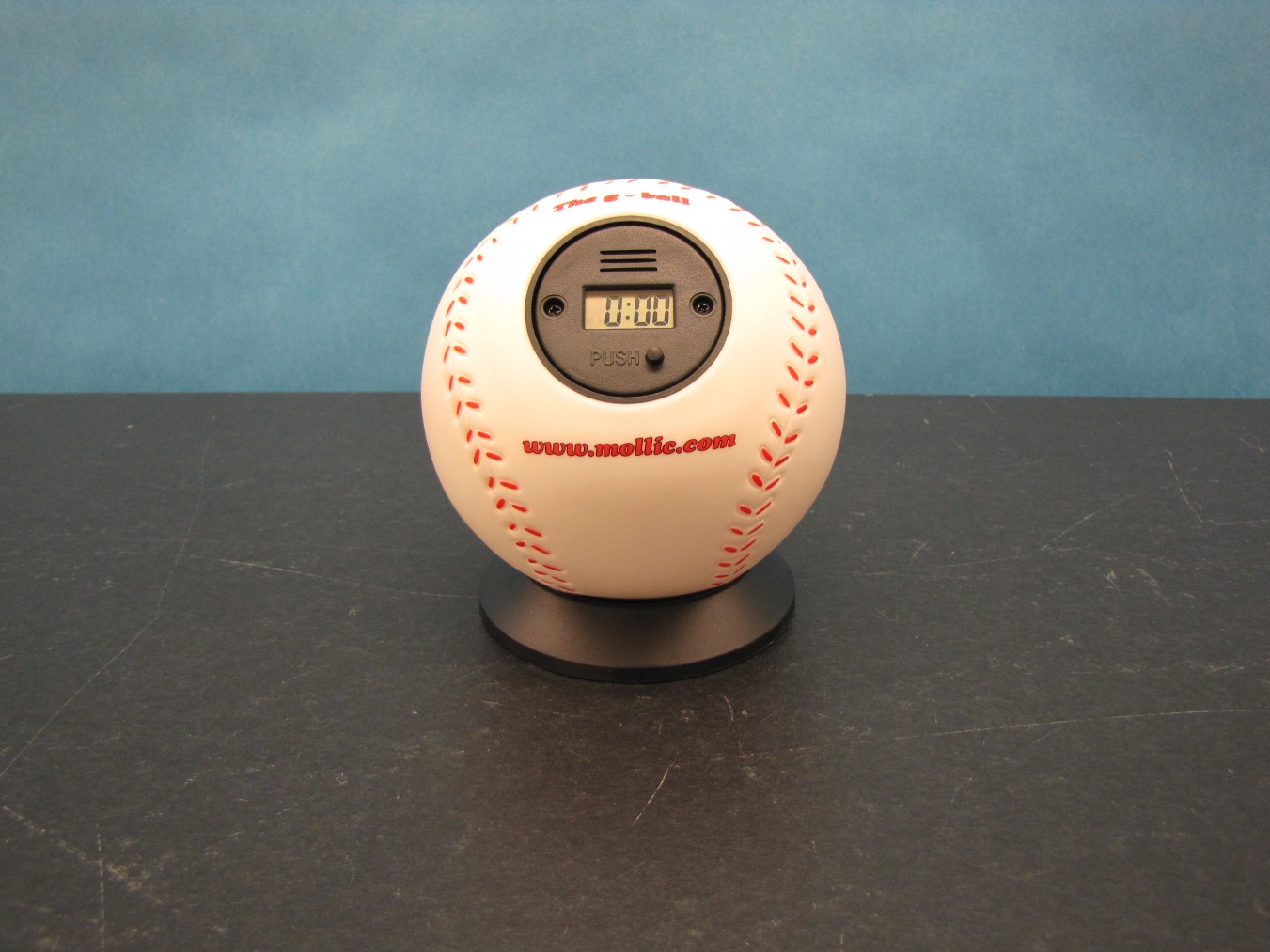Demos: 1G-06 Newton's "g" Ball

The "g" ball contains a stop watch (accurate to a hundredth of a second) which starts when the ball is released from your grasp and stops when it contacts a surface. You can use the "g" ball to calculate the acceleration due to gravity by dropping it from a known height. Using the formula g = 2d/t2 (derived from d = (1/2)gt2) you can determine the value for g. You can also determine the distance the ball falls by measuring the time of its fall from the display and using the before mentioned formula. You can also demonstrate the principle of projectile motion that only vertical motion is accelerated motion as long as air resistance is negligible. First drop the ball from an arbitrary height and notice the time. Now, from the same height, throw the ball sideways and determine the time. The two times should be equal. When using the "g" ball please make sure that the ball lands on the carpet square provided for this demonstration. This cushioned fall helps protect the durability of the "g" ball.
Last Updated: Nov 30, 2023 11:25 AM